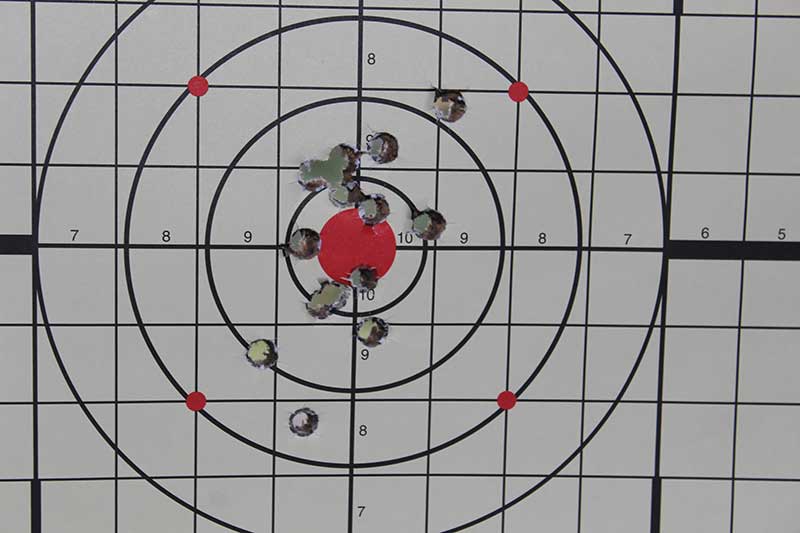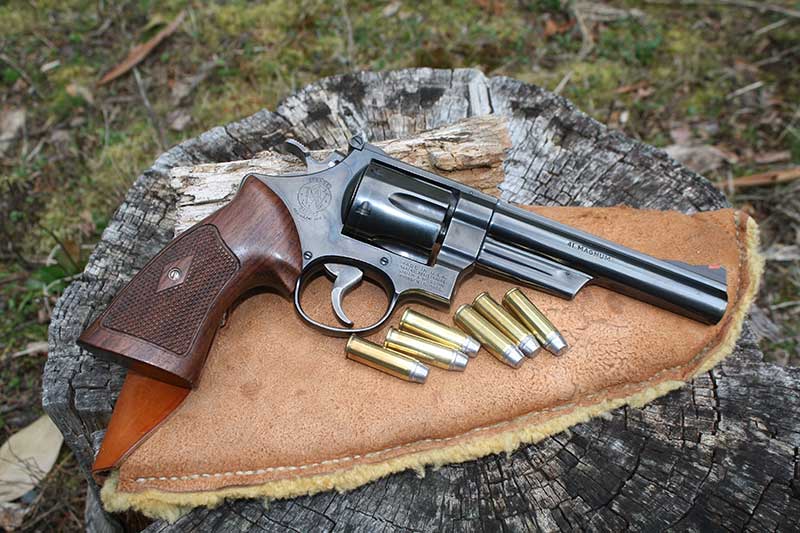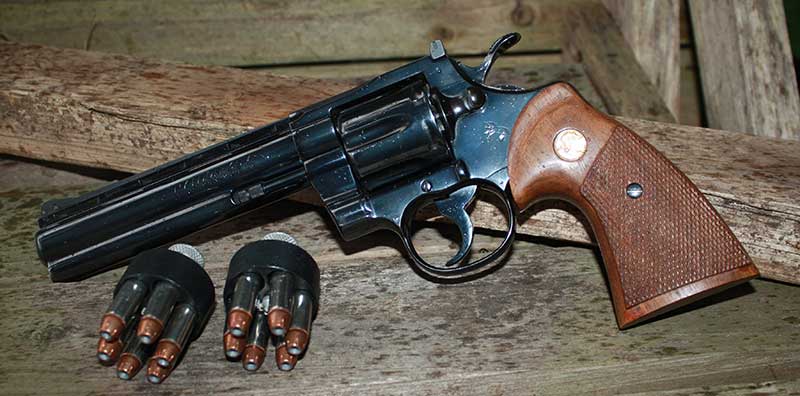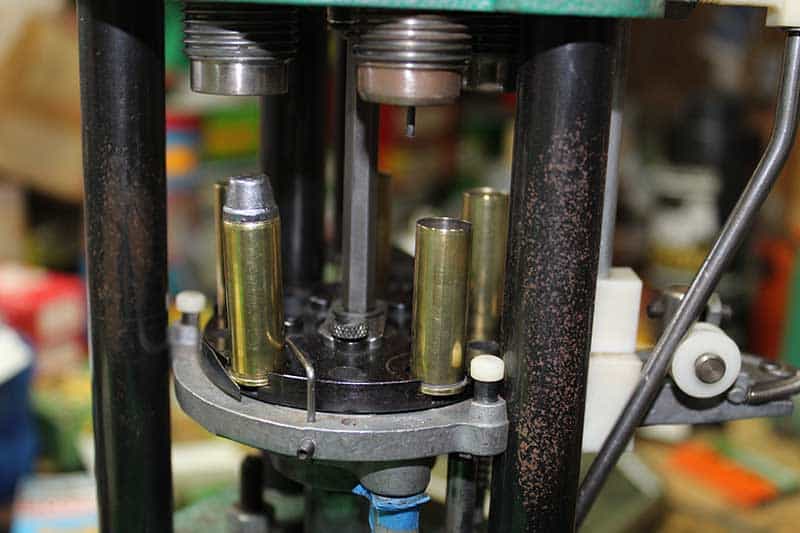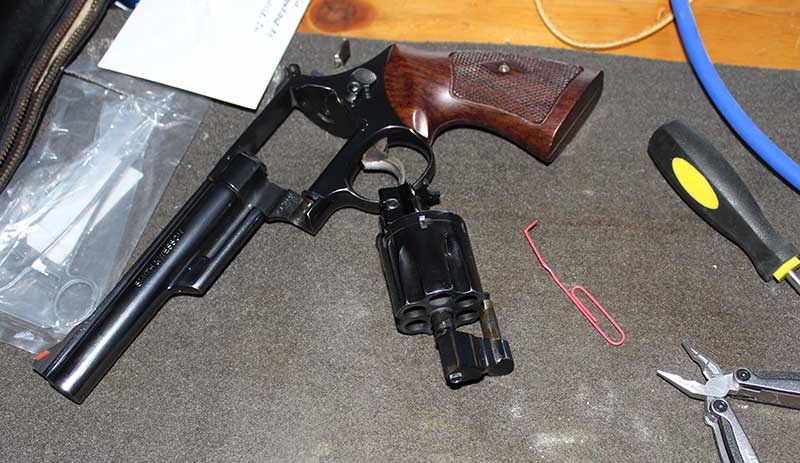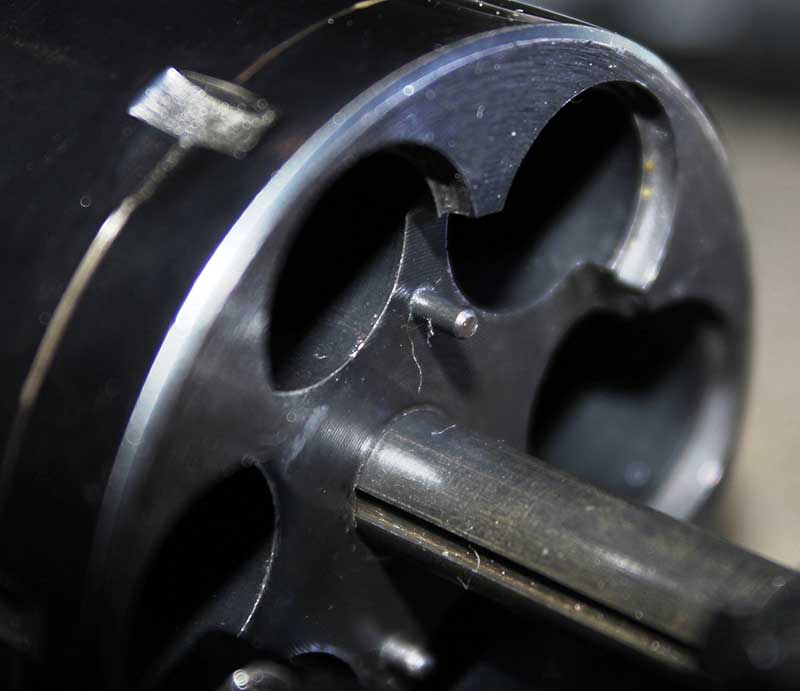Adequate Horsepower
Experimentation Sometimes Proves The Need For Less
Faithful readers will recall I’ve been experimenting for a good .41 Magnum load combining a lead semi-wadcutter bullet and a good charge of propellant — in this case Alliant 2400 — and my research has led me to a surprising conclusion.
Less actually has turned out to be more: more comfort, slightly more accuracy, and an overall more gentle treatment of my revolvers. If there’s something wrong here, I haven’t found it, and people who load their own ammunition might pay attention.
This journey began last year, with the purchase of some LSWC projectiles from an outfit called Stateline Bullets, located back east in Great Bend, Pa. These were 200-grainers and I was delighted when they performed very well ahead of 17.0 grains of 2400, clocking an average of 1,234 fps out of a Ruger Blackhawk with a 6.5-inch barrel. When launched from a 6-inch Model 57 S&W, readers will recall, they averaged 1,186 fps, while a “mystery bullet” I’d found (a box of some 40 appeared in my workshop) moved along at 1,254 fps. That was a 68 fps disparity I finally attributed to the fact the “mystery” bullets have a flat base while my Pennsylvania pills have a slight taper at the base.
A few weeks ago, after taking delivery of several hundred 215-grainers from RimRock Bullets in Polson, Mont., the search for a good load — this time using 16.0 and 16.5 grains of 2400 or 8.0 grains of Hodgdon’s CFE Pistol powder — found good results out of all of my sixguns. None of these loads are considered maximum (I was advised 17.0 grains of 2400 behind these bullets would be dandy) but what became obvious to me is that the slightly reduced load is a lot easier on my hand and wrist, and just as accurate on a target.
Over the CFE Pistol, this bullet turned in muzzle velocities averaging 955.1 fps over a chronograph placed 30 inches ahead of the gun, while 16.0 grains of 2400 averaged 1,170 fps and at 16.5 grains, the velocity jumped to 1,228 fps, with no signs of leading.
Q. What kind of impression does a 215-grain lead bullet traveling at more than 1,200 fps make on whatever it hits?
If you answered “It’s gonna hurt,” give yourself an “A” grade. Since my original search was to find a load, which not only delivered accuracy on paper and still had the horsepower to discourage a nasty predator or drop a buck in its tracks, I am a happy camper.
Consider This
Both of my vintage — dare I use the term “classic?” — S&W .41 Magnums might be very difficult to replace. I like these wheelguns, with their hammer-mounted firing pins, the absence of an internal locking mechanism, their smooth double-actions and crisp single-action let-offs.
I’ve dispatched two deer with my Ruger Blackhawk and one with the 4-inch Smith. I want to keep them in top condition, which means I don’t want to knock them out-of-time or, even worse, blow one up or crack the forcing cone, or do something else people have done by running hot pushing-the-envelope loads. Besides, I like being nice to my gun hand.
It occurred to me while engaged in this exercise, many people have complained about the original classic Colt Python, and how many of them have been put out of time with steady diets of full-house .357 Magnum loads.
I began thinking (usually a really bad idea in my case because it frequently gets me in trouble) that some guys using maximum-level handloads might have been their own cause of trouble with their Pythons. I say this as a guy who has put a lot of magnum rounds downrange with my Python, and it is showing no signs of fatigue, primarily because I feed it with less-than-maximum loads that have turned out to be pleasingly accurate. As Wyatt Earp reportedly said, “Fast is fine, but accuracy is final.”
The massive energy generated by the discharge of a magnum cartridge in any handgun will eventually take its toll. I’ve never owned a handgun to intentionally abuse it. I’ve spent way too much money on these revolvers to turn them into junk with too much propellant and testosterone. The people who designed and assembled these handguns produced the best firearms they could, but not so someone could go out and beat them to pieces. As I’ve said many times, “I only look stupid.”
Watch for Signs
I’ve paid close attention to the empties out of my .41 Magnums as I boosted the powder charges. When I noticed that an occasional primer was starting to flatten slightly (for this project I’ve used both Winchester and Remington large pistol primers), I stopped bumping up the charges.
I’m certain the suggested 17.0 grain charge of 2400 is easily handled by any of my .41-caliber revolvers, but the added velocity I experienced, with very negligible improvement in accuracy just didn’t seem worth it.
At what point, every handloader should ask himself or herself, is enough, enough? Put another way, just how dead do you have to kill something? None of the deer I’ve dispatched with handguns fell to a maximum load. Look at a Nosler loading manual, for example, and they always identify the most accurate load. Rarely is it the maximum load for any caliber.
Some years ago, using data from one of the manuals for a target load for the .41 Magnum, I noticed that one case out of a hundred or thereabouts split. I stopped using that particular load. I’ve pushed some loads to the max, and flattened many a primer in the process, but no more. My accuracy suffered, and so did my hand and wrist.
I’m just a guy looking for a reliable and consistent load combination that doesn’t have to wake the dead or produce a barbecue-quality muzzle flash. That sort of thing has never really impressed me, whereas a notched tag, or a tight group just makes my day.
But, Wait a Minute
Is this the end? Oh, don’t make me laugh!
A pal of mine from Idaho is telling me about loading 215-grainers ahead of H110, one of my favorite magnum pistol powders. To make me drool a bit we’re going to be hooking up in early June and he’s bringing along a bunch of bullets he cast for use in his wife’s Model 57, and she’s deadly accurate with it. He’s offered to give me some, and I think it’s just to get me hooked.
I look in the mirror and see I’ve created a monster. Or, maybe I’ve found a consumptive use of my time if/when I retire.
I’ve used H110 for decades in both .357 and .41 Magnum loads with wonderful results. It delivers consistent charges out of my progressive RCBS press, and experience has demonstrated it can sail a 210-grain Nosler JHP out of my .41 Magnum to an impressive 600 yards.
So, I’m anticipating a lot more time at the loading bench, and back at the range.
While this was going on, I made a small but important repair to my Model 57. A few weeks ago, I reported an extractor pin had vanished from my cylinder.
To the rescue came J. Carter Taylor of Evansville, Ind. He sent over a couple of tiny replacement pins made from .052-inch x .210-inch music wire. After confirming the pinhole was empty and nothing had actually broken off, I used a pair of surgical forceps to gently insert one of these replacement pins.
It’s a simple matter of removing the cylinder and crane from the revolver, raising the extractor to expose the empty pinhole and inserting the replacement. Patience and a steady hand are required.
Prior to insertion, I dabbed the replacement with just a tiny bit of blue Loctite to hold it in place. After allowing the pin to set, I worked the extractor a few times, added a spot of lubricant and a day later, headed back to the range. I’m happy to say the repair works like new, and I’ve fired the revolver a lot since installing the new pin.
Taylor is a member of the Smith & Wesson forum to which I’ve belonged for a couple of years. My little exercise reinforced my opinion that such forums are gathering places for some of the best folks around — devoted shooters who are invariably eager to assist another member.

